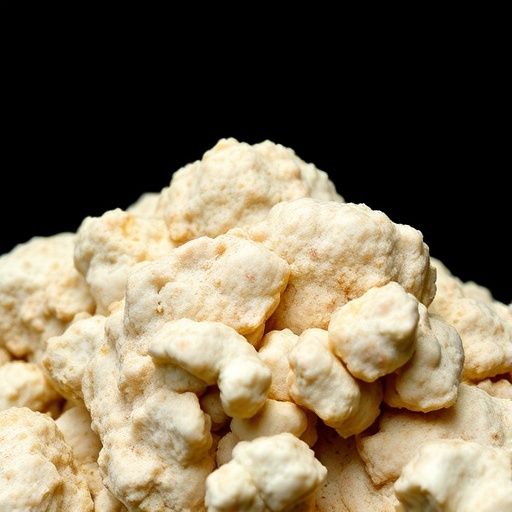Recent advances in dental materials have significantly transformed the way endodontic treatments are conducted. One of the emerging materials that has gained attention is hydroxyapatite-coated gutta-percha. Researchers have been keen on exploring the adhesive performance and failure modes of this innovative material when paired with various root canal sealers. In their latest study, Azami et al. (2025) conducted a comprehensive investigation into these critical factors, shedding light on how these materials interact and the implications for clinical outcomes in endodontics.
Gutta-percha has long been the material of choice for root canal filling procedures. Its biocompatibility, stability, and appropriate flow characteristics make it an ideal candidate for sealing the root canal system. However, as dental techniques evolve, researchers have turned towards enhancing traditional materials to improve their overall efficacy. Hydroxyapatite, a naturally occurring mineral form of calcium apatite, has been investigated for its potential to enhance the adhesion properties of gutta-percha in root canal therapies, making it a promising candidate for improving treatment outcomes.
The study undertaken by Azami and colleagues focuses on how hydroxyapatite affects the adhesive strength of gutta-percha in conjunction with different root canal sealers. Understanding the performance of these combinations can inform practitioners about which materials may yield the best results in their clinical practice. The researchers meticulously designed experiments to assess the adhesive performance of hydroxyapatite-coated gutta-percha, revealing fascinating insights that could alter conventional practices in endodontic treatments.
A notable highlight of this research is the rigorous evaluation of various root canal sealers alongside hydroxyapatite-coated gutta-percha. The authors compared sealer types, investigating how they contributed to the overall bond strength and failure mechanisms within the root canal system. This comprehensive approach allowed them to draw critical conclusions regarding the performance disparity among the tested sealers and their compatibility with the hydroxyapatite coating.
In the context of adhesive performance, the research provides empirical evidence on how hydroxyapatite coatings can significantly boost the adherence of gutta-percha to the dentin walls of the root canal. Enhanced adhesion is paramount, as it influences the sealing ability of the root canal filling, thereby potentially preventing bacterial re-infection and ensuring long-lasting treatment effectiveness. Azami et al. elegantly illustrated that by augmenting standard gutta-percha with hydroxyapatite, the clinical success of root canal treatments could experience a substantial improvement.
Moreover, the study delves into the various failure modes that can occur when using hydroxyapatite-coated gutta-percha with different sealers. Understanding these failure modes allows dental practitioners to anticipate potential issues that could arise during or after treatment, paving the way for better decision-making. By analyzing how different sealers interact with the hydroxyapatite-coated gutta-percha, the researchers provided valuable insights that could guide clinicians in selecting the optimal combinations for enhancing treatment outcomes.
Through a combination of in-vitro tests and extensive data analysis, the research highlighted the synergies between hydroxyapatite and traditional root canal materials. The results revealed that specific combinations of hydroxyapatite-coated gutta-percha and particular sealers exhibited superior adhesive capabilities compared to traditional fillings. The study serves as a cornerstone for future research endeavors aimed at optimizing dental materials for endodontic applications, emphasizing how viable innovations can reshape clinical practices.
Cumulatively, this research not only expands our comprehension of adhesive dynamics in root canal therapy but also invites further inquiry into the applications of hydroxyapatite beyond endodontics. The potential for hydroxyapatite in various dental applications, from restorative materials to bioactive coatings, opens new avenues for improving dental care outcomes. The implications of these findings will resonate within the dental community, driving further exploration into novel material compositions that can push the boundaries of current practices.
Ultimately, understanding how hydroxyapatite-coated gutta-percha interacts with root canal sealers marks a significant milestone in endodontic research. This innovative approach could potentially transform the efficacy of root canal treatments by addressing common challenges associated with material adhesion and microbial contamination. As dental science continues to evolve, the synergy of biotechnology and engineering propels us toward a future where dental interventions are safer, more effective, and more durable.
In conclusion, the work by Azami et al. represents a pivotal moment in the ongoing quest for improving endodontic outcomes. Their findings underscore the importance of exploring new material combinations and innovative practices that enhance the quality of dental care. As we embrace these advancements, it is essential for the dental community to stay informed and adaptive, ensuring that patients receive the best possible treatment experiences and outcomes.
As research progresses and more studies emerge surrounding hydroxyapatite and its applications in dentistry, we can anticipate a future where root canal therapy becomes even more effective and patient-friendly. The integration of these findings into clinical protocols will surely encourage dentists and researchers alike to remain at the forefront of dental science and innovation.
Careful communication of these findings and their implications is critical to ensure that practitioners are equipped with the knowledge necessary to implement the latest advancements. By fostering a culture of continuous learning and adaptation, we can significantly enhance the standard of dental care and improve patient satisfaction across the globe.
Subject of Research: Adhesive performance and failure modes of hydroxyapatite coated gutta percha with different root canal sealers
Article Title: Adhesive performance and failure modes of hydroxyapatite coated gutta percha with different root canal sealers
Article References:
Azami, N.H., Mohd Noor, N.S., Al-Haddad, A. et al. Adhesive performance and failure modes of hydroxyapatite coated gutta percha with different root canal sealers.
Sci Rep 15, 38933 (2025). https://doi.org/10.1038/s41598-025-22842-1
Image Credits: AI Generated
DOI: https://doi.org/10.1038/s41598-025-22842-1
Keywords: hydroxyapatite, gutta-percha, root canal sealers, adhesive performance, endodontics




